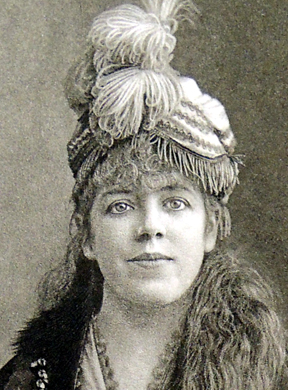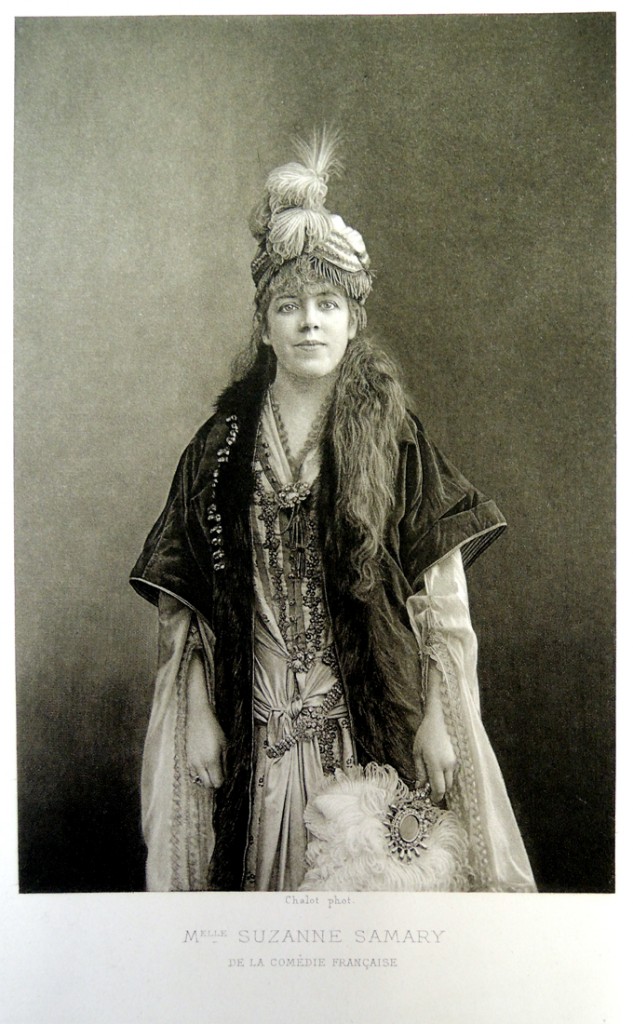
Chalot (active 1900s), Melle. Suzanne Samary de la Comedie Francaise, ca. 1888. Photogravure. Graphic Arts Collection GA 2012.02436
This portrait of Suzanne Samary, a famous comédienne with the Comedie-Française, was taken around 1888, by the French photographer know simply as Chalot. He was a sought-after artist, in particular for his large, almost life-size images. In the January 1890 issue of American Journal of Photography, Chalot’s Parisian studio is described in minute detail. Here are a few sections:
“Chalot catches the sun at 18, rue Vivienne, where a small window shows off a few of the platinums by the firm. Through a courtyard and upstairs one arrives at a grand reception room, which it would be hard to equal. It is preceded by a tiny entrance lobby for coat and hat-racks, and made pleasant by plants in boxes. The beauty of this fine receiving-room consists above all in the exhibition of the platinum prints, mingled judiciously with the carbon and silver portraits and colored enamels. …
 “M. Chalot claims the platinum process worked by him to be a special one and his formula is kept secret. To produce such photographs is indeed worthy of a patent. He rightly terms the ordinary process a coarse and unsatisfactory one, and there is certainly no comparison between the two. …
“M. Chalot claims the platinum process worked by him to be a special one and his formula is kept secret. To produce such photographs is indeed worthy of a patent. He rightly terms the ordinary process a coarse and unsatisfactory one, and there is certainly no comparison between the two. …
“The printing room is a model of its kind, and fitted at sides and roof with white blinds to foil the sun. His studio is small, but all sufficient, and poses are made at either end. It has blinds that roll up from the bottom or down from the top of the side windows; otherwise, the horizontal two-feet wide sliding curtains, etc., are the same as with other ateliers. A very fine instrument is the camera by Joute—about fifteen inches square—the lens being a Voigtlander. …
“Complete as are the other departments, remark is only necessary on the office, which surprises one directly on leaving the magnificent reception or show room, for here behind the curtains a counter of the most uncompromisingly business style is found manned by three clerks. It has been noticed in some establishments Payments positively in advance, and the business-like caisses in others certainly leads one to think that a photographer might be left, like a tailor, without proper precaution. Hence the necessity of ostentatiously introducing the desk in some place where customers are bound to pass….”
